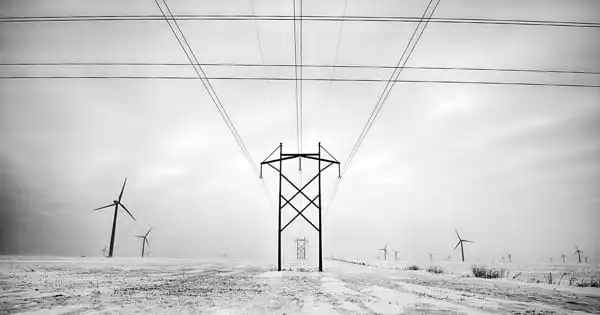The state of Texas experienced a catastrophic power outage in February 2021 as a result of three strong winter storms that swept over the United States on February 10–11, 13–17, and 15–20. The storms produced the biggest energy infrastructure breakdown in Texas history, resulting in water, food, and heat shortages. More than 4.5 million households and companies were without power for several days, with some going without for several weeks. At least 246 individuals were killed directly or indirectly as a result of the crisis, with some estimates putting the figure as high as 702 dead.
One year after winter storms damaged Texas’ electricity infrastructure, causing more than 200 deaths, a Cornell University-led study suggests contracting modifications to lessen the susceptibility of decentralized energy markets to unusual catastrophes.
Such “energy-only” marketplaces rely on investors anticipating demand for all conditions and incorporating sufficient resiliency into the system. They allow prices to skyrocket during extreme events to encourage people to prepare.
However, in Texas, where Winter Storm Uri brought devastating blackouts over five days of subzero temperatures, the crisis highlighted the market’s failure to manage risk as intended, according to Jacob Mays, assistant professor in Cornell’s School of Civil and Environmental Engineering. He claimed that winterization investment fell short because the payback was too far and unclear.
You’re relying on investors buying lottery tickets, where they create resources in the expectation of getting a significant payout once every 20 or 30 years. That is simply too hazardous for most long-term infrastructure investors. They want a more consistent revenue source.
Jacob Mays
“You’re relying on investors buying lottery tickets, where they create resources in the expectation of getting a significant payout once every 20 or 30 years,” Mays explained. “That is simply too hazardous for most long-term infrastructure investors. They want a more consistent revenue source.”
Mays is the principal author of the journal Joule article “Private Risk and Social Resilience in Liberalized Electricity Markets.”
The experts suggest, using Texas as an example, that decentralized energy markets are prone to underinvestment in resilience against unusual catastrophes. They argue that real-world gaps in risk trading undercut the markets’ idealized assumption of what economists refer to as complete risk markets.
To address this vulnerability, the researchers argue that the Electric Reliability Council of Texas (ERCOT) and other similar systems must do a better job of translating high spot prices into stable, long-term contracts with more predictable returns on investment. Their proposed solution is mandatory contracts requiring advanced energy procurement.
Texas is unique in the United States, if not globally, in its implementation of an energy-only market. Most systems in the United States have a “capacity” requirement, under which a system operator decides the level of resources required and power consumers contribute to the cost of reaching it.

The primary distinction between the Texas market and other energy markets in the United States is that it is an electricity-only market. There is no capacity market where generators are paid to ensure that there is enough electricity to fulfill peak demand. The generators only profit when they send electrons to the grid.
A market based solely on electricity is analogous to the New York Yankees only paying the players who take the field. If the bench players aren’t paid unless they play, they’ll soon be bidding to play for less and less just to eat. Mays is exploring how to ensure that systems ensure appropriate resources in ways that promote, rather than hinder, decarbonization efforts across both strategies.
Mays stated that one proposed reform in Texas, known as the Load-Serving Entity Reliability Obligation, contains aspects of what the research team believes is missing. However, most of the reform debate has centered on what they see as distractions from the main issue.
Some observers have stated that spot prices, which are set every five minutes depending on real-time grid circumstances, were not permitted to rise sufficiently to motivate proper winterization expenditure. That explanation, according to Mays, does not explain why the system failed to fulfill its own dependability target, or what happened to prices.
Others have faulted the system operator, ERCOT, for failing to anticipate such severe weather. However, Mays argued that this is unfair under a system designed to limit central planning in favor of the aggregated knowledge of the entire market, which could have predicted exceptional but not unprecedented conditions.
“This failure is shared by everybody concerned,” the authors stated, referring to the decentralized nature of ERCOT’s decision-making.





